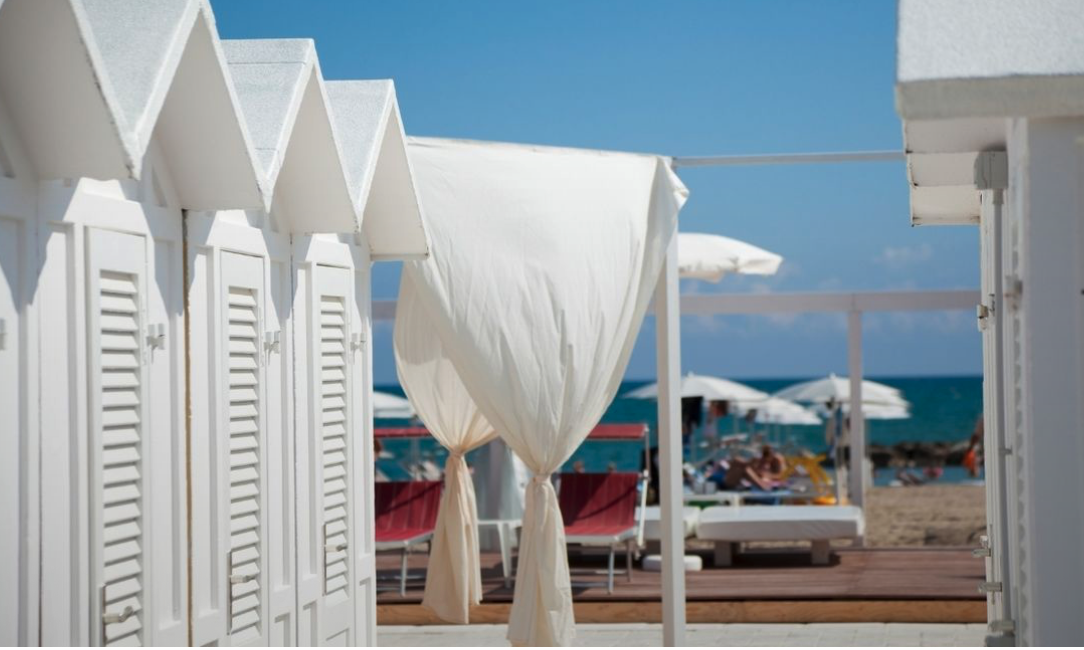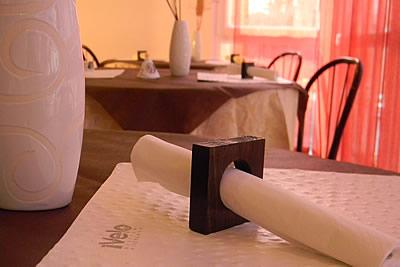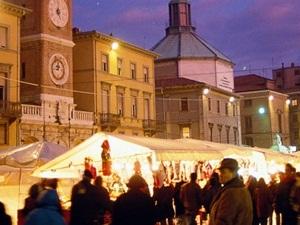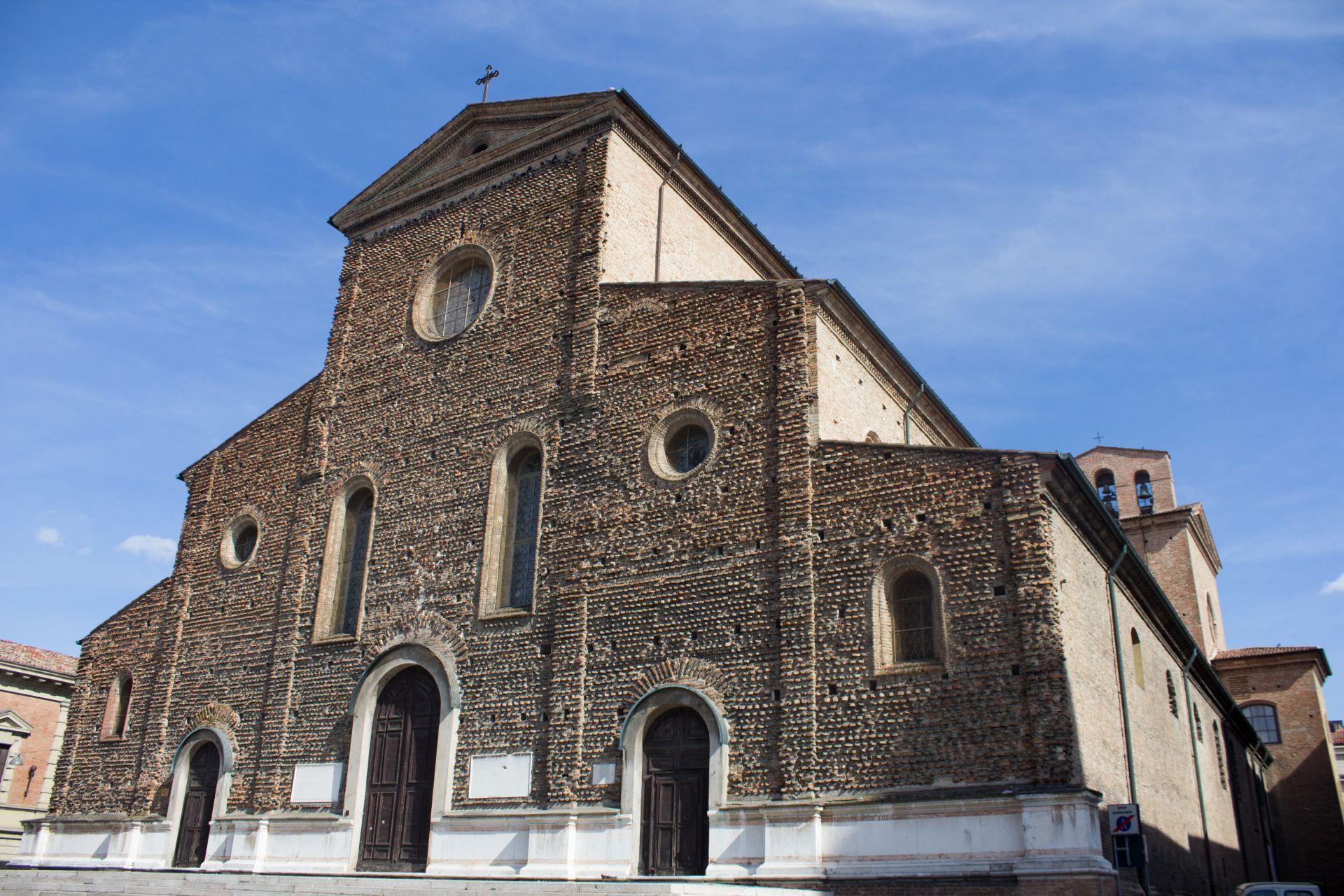The name of the city of Rimini derives from the ancient Roman name 'Ariminum', founded in 268 BC by the Romans. This toponym originates from the name of the Marecchia river, which in Roman times was called 'Ariminus', so 'Ariminum' literally means 'the city on the Marecchia'.
The area was probably already inhabited by Umbrian-Etruscan settlements before the Roman foundation, and the name Ariminum is also connected to Latin cognomina such as Ariminus and Ariminensis, with possible Etruscan connections.
The Roman colony of Ariminum was founded to control the territory and became an important communication hub between the north and south of the Italian peninsula.
In summary, Rimini takes its name from the Marecchia River (Ariminus in Latin) and the ancient name Ariminum reflects this river origin.
Symbol of the city of Rimini
The main symbol of the city of Rimini is the Augustus Arch, considered the city's most representative and ancient monument. The Augustus Arch, built in 27 B.C., was erected in honour of Emperor Augustus to celebrate the restoration of Italy's most important consular roads and is still an emblem of identity for Rimini today.
The civic coat of arms
The municipal coat of arms of Rimini is divided vertically into two parts:
On the left, against a silvery background with a rippling sea, are the Augustus Arch (in its hypothetical original form) and the Tiberius Bridge, both monuments of great historical and identity value for the city.
On the right, on a red background, stands a red Guelph cross bordered in silver, a symbol granted to the city in 1509 by Pope Julius II, confirming its loyalty to the Guelph cause.
Why he was chosen
The Augustus Arch and Tiberius Bridge were chosen as symbols because they represent the Roman roots of the city and its historical importance as a communication hub and strategic centre since antiquity. These monuments have been present in the city seals since the 10th century and have been recognised as symbols of Rimini even during crucial historical moments, such as the resistance against Barbarossa in 1167.
The red cross edged in silver, on the other hand, bears witness to the medieval history of the city and its membership of the Guelph party, reinforced by the papal concession of 1509.
In summary:
The symbol of Rimini is the Augustus Arch, flanked by the Tiberius Bridge and the Guelph cross in the city's coat of arms, chosen to represent the city's Roman history, strategic role and civic tradition.
Symbols of Rimini fishermen's sails: meaning and function
The sails of the traditional boats of Rimini fishermen, known as 'vele al terzo', were colourful and richly decorated with symbols, figures and initials. These symbols were not chosen at random, but had precise practical and social functions.
Why the symbols on the sails were needed
Boat and family identification
Each boat had a unique sail, decorated with symbols representing the owner family or the nickname of the fisherman. For example, a pear for the Perini family, a shoe for the Scarpa family, a pumpkin for the Zucca family. This system allowed boats to be recognised at a distance at sea or at the entrance to the port, facilitating the return home and communication between families and fishermen.
Communicative and social function
The symbols on the sails were a kind of 'popular heraldry': as well as identifying the boat, they reinforced the sense of belonging to a community and the social relations between fishermen. Often religious or astronomical symbols, everyday objects or animal figures were also included, sometimes with ironic or good-humoured meanings.
Remote recognition
The bright colours and clearly visible designs served above all for optical recognition on the open sea or among the many boats in crowded harbours. This was essential in times when modern means of communication did not exist: for example, it is said that in Chioggia, someone used to climb up the bell tower with a telescope to recognise incoming boats and warn their families.
Tradition and continuity
As the generations went by, the sons who set up on their own modified or enriched the family symbol, adding personal details or elements related to the bride's lineage, as sometimes required in marriage contracts.
Synthesis
The symbols on the sails of Rimini fishermen's boats served mainly to immediately and unequivocally identify the boat, family or group to which they belonged, thus becoming a means of communication, recognition and pride for the local seafaring community.
Rimini nicknames
In Rimini, as in many communities in Romagna, families have always had nicknames handed down from generation to generation and used to identify family branches, often linked to personal characteristics, trades, objects or particular events.
Here are some examples of Rimini family nicknames and their corresponding surnames:
Borsanìra (De Nicolò family of Viserbella), derived from the habit of the progenitor of always carrying a black tobacco bag.
Panarèta (Muccioli family), probably related to the trade of the ancestors, with reference to the 'basket' used to transport agricultural products.
Pilincìn (Morolli), nickname for families in Viserba.
Brand (Brandi), also from Viserba.
Baben (Ugolini), Bagaiul (Montebelli), Bambinoun (Zavatti), Barbanira (Cecchini), Barbein (Arcangeli), Bardinein (Tamburini), Baroia (Fabbri), Bartoza (Lotti), Basucin (Morri), Belocc (Pironi), Bigion (Agostini), Bigiuga (Sacchetti), Biloga (Vittori), Bizagna (Bezzi), Braganoun (Tonni), Brusapioin (Rocchi), Bselà (Romani), Buion (Giannini), Bulogna (Bianchi), Burch (Mingucci), Burdom (Fabbri), Burfecia (Gaudenzi) are other examples of nicknames associated with Rimini families.
These nicknames often derived from physical characteristics, professions, everyday objects or historical events related to the family. They served to distinguish people with the same surname, to strengthen group identity and to keep the historical and social memory of the community alive.
In short, the nicknames of Rimini families are a cultural heritage reflecting the history, traditions and social relations of the city, and are still used as a sign
How family nicknames are handed down in Rimini culture
In Rimini culture, family nicknames are handed down from generation to generation as a true identity inheritance that cannot be refused. The nickname accompanies not only the individual, but the entire family unit, becoming a distinctive sign recognised by the local community1.
These nicknames often originate from personal characteristics, professions, objects or anecdotes linked to the progenitors, and are kept alive through oral tales and collective memory. For example, a progenitor who used to always carry a black tobacco bag caused the nickname 'Borsanìra' to be passed on to his descendants, identifying them to this day1.
The transmission is therefore mainly oral, supported by a strong community tradition, and nicknames are often enriched or modified by descendants to include references to new family events or marriage ties. Moreover, the local community actively participates in keeping this tradition alive, as evidenced by initiatives to collect and document nicknames, including through modern tools such as social media12.
In short, family nicknames in Rimini are handed down as a cultural and social heritage, reinforcing family identity and a sense of belonging to the community through oral memory and collective participation.









